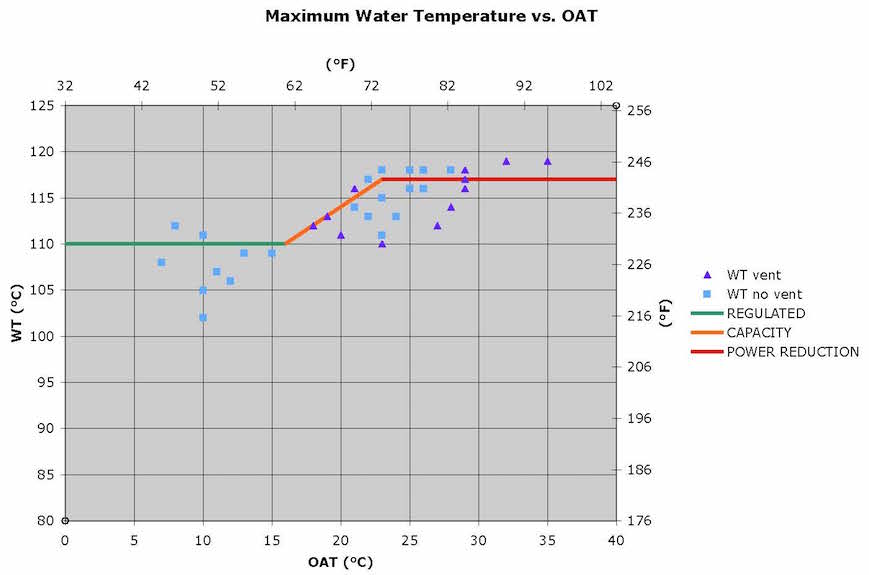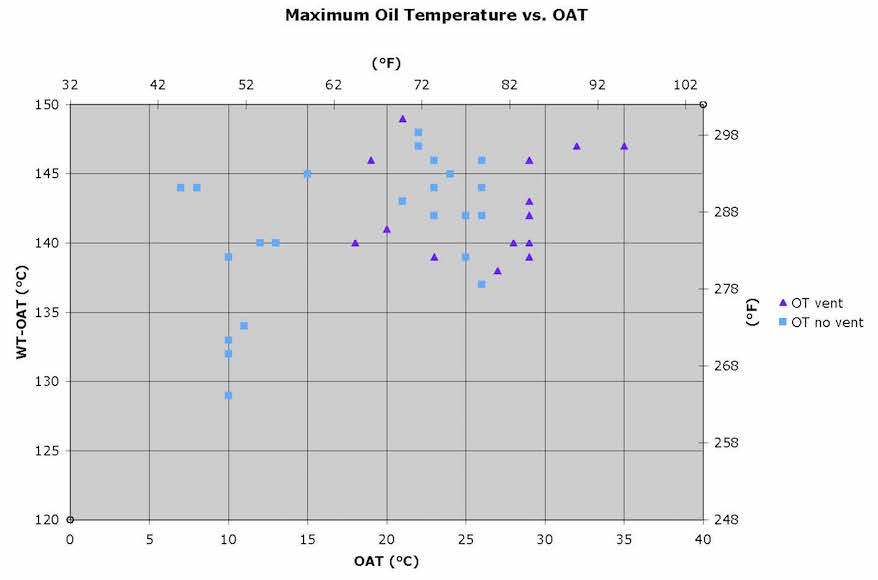My car is an N54 with the original intercooler running a Stage 1 LT Drive Cobb AccessPort tune (which is very mild). I have left the tune there because I want the car to be driveable for extended 20-30 minute lapping sessions. The N54 is coolant temperature challenged, which has been my motivation to install the CSF radiator and now, hood vents. I have enough data that I can see how hood vents affect coolant and oil temperatures. The data presented is from the peak coolant and oil temperatures recorded during extended hot laps at a variety of outside air temperatures at several different tracks. Peak oil and peak water do not necessarily occur on the same lap or at the same place in the lap. Water in particular recovers quickly when pace is relaxed. Therefore any holdups (i.e. encountering slower traffic) can affect the results. I have included data from 25 lapping sessions without the hood vents and 15 lapping sessions with the hood vents. I have plotted maximum water temperature vs. OAT and also (maximum water temperature - OAT) vs. OAT. The two approaches reveal the same conclusions, but in a slightly different way. I could (and perhaps should) have kept only the highest recorded water and oil temperatures at each OAT for which I have data because only the highest values actually matter.
What is apparent is that there are 3 modes of operation: below about 16°C (61°F) the water temperature does not track OAT and is being regulated by the thermostat. Between 16-23°C (61-73°F) the thermostat is wide open and the radiator is working at peak capacity. Therefore the coolant temperature rises in direct proportion to OAT. Above 23°C (73°F) the coolant will reach the power reduction limit of 117°C and coolant temperature will not rise much above that level as power is progressively reduced to protect the engine.
Oil temperatures do not track OAT and are never an issue on my car.
The hood vents have no discernable impact on peak water or oil temperatures. Whatever the benefits of the hood vents, they don't extend to allowing extended lapping sessions at hotter outside air temperatures.


